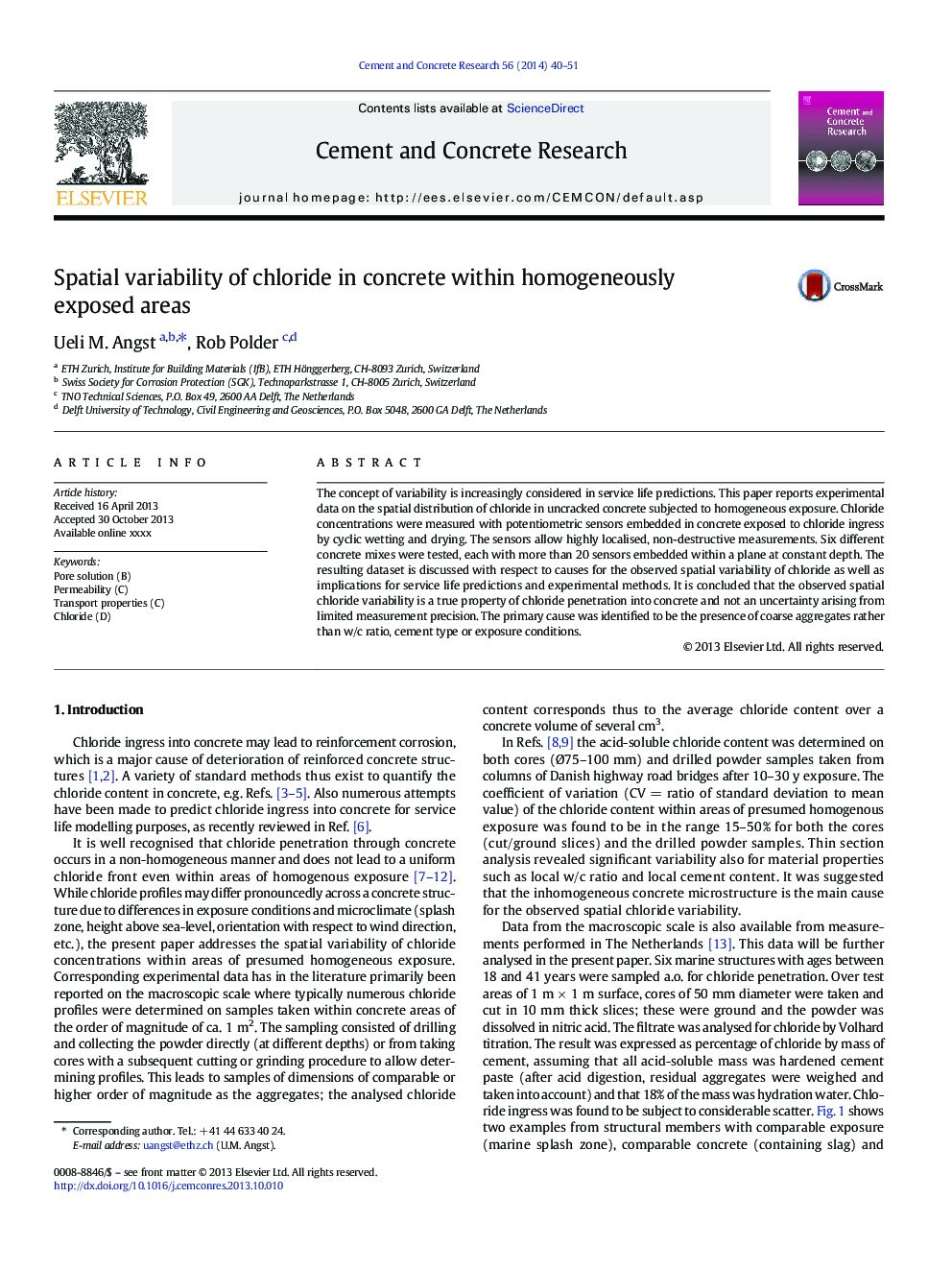| Article ID | Journal | Published Year | Pages | File Type |
|---|---|---|---|---|
| 7885653 | Cement and Concrete Research | 2014 | 12 Pages |
Abstract
The concept of variability is increasingly considered in service life predictions. This paper reports experimental data on the spatial distribution of chloride in uncracked concrete subjected to homogeneous exposure. Chloride concentrations were measured with potentiometric sensors embedded in concrete exposed to chloride ingress by cyclic wetting and drying. The sensors allow highly localised, non-destructive measurements. Six different concrete mixes were tested, each with more than 20 sensors embedded within a plane at constant depth. The resulting dataset is discussed with respect to causes for the observed spatial variability of chloride as well as implications for service life predictions and experimental methods. It is concluded that the observed spatial chloride variability is a true property of chloride penetration into concrete and not an uncertainty arising from limited measurement precision. The primary cause was identified to be the presence of coarse aggregates rather than w/c ratio, cement type or exposure conditions.
Related Topics
Physical Sciences and Engineering
Engineering
Industrial and Manufacturing Engineering
Authors
Ueli M. Angst, Rob Polder,
